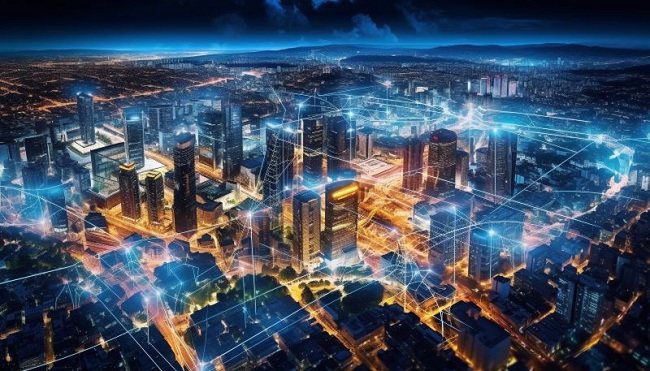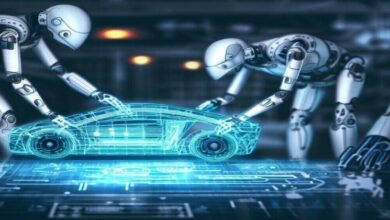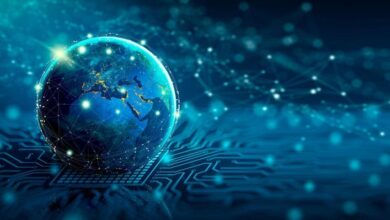How Innovation Transforms Traditional Industries

The global economic landscape is experiencing unprecedented transformation as technological innovation fundamentally reshapes industries that have remained largely unchanged for decades. From manufacturing and agriculture to finance and healthcare, traditional sectors are undergoing radical disruption that is rewriting business models, redistributing market power, and redefining competitive advantage. This revolution extends far beyond simple digitization—it represents a fundamental reimagining of how value is created, delivered, and captured across the entire economic spectrum. This comprehensive analysis examines how converging technologies, shifting consumer expectations, and new business paradigms are dismantling established industry structures while creating extraordinary opportunities for those capable of navigating the disruption.
A. The Manufacturing Metamorphosis: Industry 4.0 and Beyond
The manufacturing sector, once characterized by mechanical processes and linear supply chains, is transforming into an intelligent, interconnected ecosystem driven by data and automation.
A. Smart Factories and Digital Twins: Physical manufacturing is merging with digital technology to create unprecedented efficiency and flexibility.
-
Cyber-Physical Production Systems: Advanced factories now integrate IoT sensors, AI analytics, and robotics to create self-optimizing production environments. Companies like Siemens and Bosch have implemented facilities where machines communicate to prevent bottlenecks, predict maintenance needs, and automatically adjust production parameters in real-time based on changing conditions.
-
Digital Twin Technology: Manufacturers create virtual replicas of physical assets, processes, and systems that enable simulation, analysis, and control. General Electric uses digital twins of jet engines to simulate performance under various conditions, predicting maintenance needs with 95% accuracy and reducing unplanned downtime by up to 40%.
-
Additive Manufacturing Evolution: 3D printing has progressed beyond prototyping to become a viable production method across industries. Aerospace companies like Boeing now print over 60,000 parts annually, reducing weight, material waste, and assembly complexity while enabling mass customization previously impossible with traditional manufacturing.
B. Supply Chain Renaissance: Traditional linear supply chains are evolving into dynamic, responsive networks.
-
AI-Driven Predictive Logistics: Machine learning algorithms analyze countless variables—from weather patterns to geopolitical developments—to optimize inventory levels, routing, and warehousing. Amazon’s anticipatory shipping patents demonstrate how companies can begin moving products toward anticipated demand before orders are even placed.
-
Blockchain-Enabled Transparency: Distributed ledger technology creates immutable records across supply chains, allowing companies like De Beers to track diamonds from mine to retail while Walmart uses blockchain to trace food products back to their origins in seconds rather than days.
-
Autonomous Logistics Ecosystems: From self-driving trucks to robotic warehouse systems and delivery drones, automation is reducing human intervention across logistics. Companies like TuSimple are operating autonomous trucking routes that reduce transportation costs by 30% while improving safety records.
C. The Servitization Revolution: Manufacturers are transitioning from selling products to delivering outcomes-as-a-service.
-
Product-Service Systems: Companies like Rolls-Royce no longer simply sell aircraft engines but offer “Power by the Hour” where customers pay for thrust rather than physical assets, with maintenance, monitoring, and performance guarantees included.
-
Usage-Based Business Models: Manufacturing giants from Philips Lighting to Hyster Company now sell illumination and lifting capacity respectively rather than light bulbs and forklifts, aligning incentives around durability, efficiency, and performance.
-
Platform-Based Manufacturing: Cloud manufacturing platforms like Xometry connect distributed manufacturing capacity with demand, creating agile production networks that can dynamically reallocate work based on capacity, capability, and cost.
B. The Agricultural Transformation: From Precision to Predictive Farming
Agriculture, humanity’s oldest industry, is experiencing its most significant revolution since the development of synthetic fertilizers, driven by data, biotechnology, and robotics.
A. Precision Agriculture Technologies: Farming is evolving from a uniform process to a hyper-localized, data-driven practice.
-
Variable Rate Technology: Advanced systems use GPS, soil sensors, and drone imagery to apply water, fertilizers, and pesticides at variable rates across fields, reducing input costs by 20-30% while increasing yields and minimizing environmental impact.
-
Automated Guidance Systems: Self-driving tractors and harvesters from companies like John Deere and Case IH use RTK-GPS for centimeter-level accuracy, enabling 24/7 operation while reducing overlap and input waste.
-
IoT-Enabled Livestock Management: Smart collars and ear tags monitor animal health, location, and behavior, enabling early disease detection, optimized feeding regimens, and improved breeding outcomes while reducing labor requirements.
B. Agricultural Biologicals and Biotechnology: Biological solutions are complementing or replacing traditional chemical inputs.
-
Microbial Inoculants: Companies like Indigo Ag develop seed treatments with beneficial microbes that enhance nutrient uptake, drought tolerance, and yield potential, reducing fertilizer requirements while building soil health.
-
RNA Interference Pesticides: Emerging biopesticides use RNA molecules to target specific pests while avoiding harm to beneficial insects, representing a more environmentally friendly alternative to broad-spectrum chemical pesticides.
-
Gene Editing Applications: CRISPR technology enables precise genetic improvements to crops, developing varieties with enhanced nutrition, disease resistance, and climate adaptability without introducing foreign DNA.
C. Controlled Environment Agriculture: Traditional field farming is being supplemented by technology-enabled indoor production.
-
Vertical Farming Systems: Companies like Plenty and AeroFarms stack growing layers in climate-controlled facilities, using 95% less water while achieving yields 350 times higher per square foot than traditional agriculture, located near urban centers to reduce transportation.
-
Aquaponics and Hydroponics: Soilless growing systems combine fish farming with plant production in recirculating ecosystems that maximize resource efficiency while enabling year-round production independent of weather conditions.
-
Plant Factory Concepts: Fully automated indoor facilities with optimized LED lighting, nutrient delivery, and environmental controls enable precise manipulation of plant growth characteristics and chemical composition for specific market needs.

C. The Financial Services Upheaval: Fintech’s Revolutionary Impact
The staid world of banking and finance has become a hotbed of disruption as technology companies redefine financial services from payments to investing.
A. Digital Banking and Neobanks: Traditional branch-based banking is being challenged by digital-first alternatives.
-
Mobile-First Banking Platforms: Companies like Chime, N26, and Revolut have attracted millions of customers by offering fee-free banking with superior user experiences, real-time notifications, and innovative features like disposable virtual cards.
-
Embedded Financial Services: Non-financial companies from Shopify to Uber are integrating financial services directly into their platforms, allowing merchants to access banking services and borrowers to secure financing at point of need.
-
API-Driven Banking Infrastructure: Platforms like Plaid enable secure connectivity between financial institutions and third-party applications, powering everything from budgeting apps to investment platforms while creating new revenue streams for data-rich incumbents.
B. Alternative Lending and Capital Markets: Technology is democratizing access to capital while disintermediating traditional institutions.
-
Marketplace Lending Platforms: Companies like LendingClub and Funding Circle connect borrowers directly with individual and institutional investors, using alternative data and machine learning to assess creditworthiness beyond traditional FICO scores.
-
Revenue-Based Financing: Platforms like ClearCo provide growth capital to e-commerce businesses in exchange for a percentage of future revenue, aligning repayment with business performance rather than fixed schedules.
-
Fractional Investing Applications: Services like Robinhood and Public have democratized access to investment markets, enabling commission-free trading of fractional shares while introducing social features that have changed investor behavior.
C. Blockchain and Cryptocurrency Innovations: Distributed ledger technology is challenging fundamental financial infrastructure.
-
Decentralized Finance (DeFi): Blockchain-based protocols are recreating traditional financial instruments—lending, borrowing, trading—without central intermediaries, creating open, transparent, and globally accessible financial markets.
-
Central Bank Digital Currencies: Over 90% of central banks are exploring digital versions of their national currencies that could improve payment efficiency, enhance monetary policy implementation, and increase financial inclusion.
-
Tokenization of Real Assets: Platforms are enabling the fractional ownership of everything from real estate to artwork through blockchain tokens, increasing liquidity and accessibility for previously illiquid asset classes.
D. Healthcare’s Digital Renaissance: Technology Meets Medicine
The healthcare industry, traditionally slow to adopt innovation, is experiencing rapid transformation as digital technologies converge with medical science.
A. Telemedicine and Virtual Care: Geographic and temporal barriers to healthcare access are collapsing.
-
Asynchronous Telehealth Platforms: Services like Teladoc and Amwell enable patients to consult with healthcare providers via video, phone, or messaging, increasing access while reducing costs for non-emergency conditions.
-
Remote Patient Monitoring: Connected devices from smart scales to continuous glucose monitors transmit patient data to healthcare providers, enabling early intervention and reducing hospital readmissions for chronic conditions.
-
AI-Powered Triage Systems: Chatbots and symptom checkers like Babylon Health use natural language processing and medical knowledge graphs to assess symptoms and direct patients to appropriate care levels, improving efficiency while maintaining safety.
B. Personalized Medicine and Genomics: Treatment is shifting from population-based averages to individually tailored interventions.
-
Pharmacogenomics: Companies like 23andMe and Color provide genetic insights that help doctors select medications and dosages based on individual metabolic profiles, reducing adverse drug reactions and improving efficacy.
-
Liquid Biopsy Technologies: Blood tests from companies like GRAIL and Guardant Health can detect cancer DNA fragments, enabling early detection and treatment monitoring without invasive tissue biopsies.
-
Digital Therapeutics: FDA-approved software applications like Pear Therapeutics’ reSET deliver evidence-based therapeutic interventions for conditions ranging from substance use disorder to insomnia, often in conjunction with traditional treatments.
C. Healthcare Data Interoperability and Analytics: Siloed health data is becoming connected and actionable.
-
AI-Enhanced Diagnostics: Systems like Google’s LYNA can identify metastatic breast cancer in pathology images with 99% accuracy, assisting pathologists rather than replacing them while reducing diagnostic errors.
-
Predictive Analytics for Population Health: Healthcare systems use machine learning to identify patients at high risk for conditions like sepsis or readmission, enabling proactive interventions that improve outcomes while reducing costs.
-
Interoperability Platforms: Companies like Redox and Health Gorilla are creating standardized data exchange pathways between disparate healthcare systems, breaking down data silos that have historically hampered coordinated care.

E. Retail’s Reincarnation: From Transactions to Experiences
The retail sector is transforming from a product-centric transaction model to an experience-driven relationship business powered by technology.
A. Omnichannel Retail Integration: The distinction between physical and digital commerce is disappearing.
-
Buy Online Pick Up In Store (BOPIS): Retailers like Home Depot and Best Buy have integrated inventory and ordering systems to enable seamless cross-channel shopping, with BOPIS growing 500% faster than e-commerce overall.
-
Augmented Reality Shopping: IKEA Place and similar applications allow customers to visualize products in their homes before purchasing, reducing returns while increasing confidence in online shopping decisions.
-
Social Commerce Integration: Platforms like Instagram and TikTok have embedded shopping capabilities directly into social feeds, creating frictionless paths from product discovery to purchase.
B. Supply Chain and Inventory Optimization: Retail inventory management is evolving from art to science.
-
Predictive Inventory Management: AI systems analyze sales data, weather forecasts, social trends, and economic indicators to optimize inventory levels, reducing stockouts and markdowns while improving turnover.
-
Micro-Fulfillment Centers: Automated warehouses located in urban areas enable rapid delivery while reducing last-mile costs, with companies like Fabric and Takeoff Technologies creating hyper-efficient systems for grocery and general merchandise.
-
Dynamic Pricing Engines: Algorithms continuously adjust prices based on demand, competition, and inventory levels, with companies like Amazon making millions of daily price changes to maximize revenue and inventory efficiency.
C. Customer Experience Personalization: Mass marketing is being replaced by individualized engagement.
-
AI-Driven Recommendation Engines: Systems like Amazon’s and Netflix’s analyze individual behavior and similar users to surface relevant products and content, driving significant portions of total sales through personalized discovery.
-
Hyper-Personalized Marketing: Platforms like Braze and Segment enable coordinated, personalized customer journeys across email, mobile, web, and in-store interactions based on individual behavior and preferences.
-
Visual Search and Discovery: Technologies like Google Lens and Pinterest Lens allow users to search using images rather than text, creating new pathways to product discovery and purchase.
F. Navigating the Disruption: Challenges and Strategies
While innovation creates tremendous opportunities, it also presents significant challenges that organizations must navigate successfully.
A. Legacy Infrastructure and Technical Debt: Established companies often struggle with outdated systems that impede innovation.
-
API-Led Connectivity: Companies like Salesforce and MuleSoft promote API-first approaches that create bridges between legacy systems and modern applications, enabling incremental modernization without risky “big bang” replacements.
-
Two-Speed IT Architecture: Organizations maintain stable, reliable core systems while creating separate agile environments for customer-facing innovation, balancing stability with speed.
-
Cloud Migration Strategies: Well-planned transitions to cloud infrastructure provide scalability and access to advanced services while reducing maintenance burden on legacy systems.
B. Talent and Organizational Transformation: Traditional organizations often lack the skills and culture required for innovation.
-
Continuous Learning Cultures: Companies like Amazon and Microsoft invest heavily in reskilling programs, with Amazon committing $700 million to upskill 100,000 employees for technology-oriented roles.
-
Agile Organizational Structures: Traditional hierarchies are being replaced by cross-functional teams with autonomy and accountability, enabling faster decision-making and innovation.
-
Strategic Partnerships and Acquisitions: Companies balance building internal capabilities with strategic partnerships and targeted acquisitions to access innovation and talent more rapidly.
C. Regulatory and Ethical Considerations: Innovation often outpaces regulatory frameworks, creating uncertainty and risk.
-
Regulatory Technology (RegTech) Solutions: Companies are deploying AI and blockchain to automate compliance processes, reduce costs, and improve accuracy in meeting regulatory requirements.
-
Ethical AI Frameworks: Organizations are developing comprehensive guidelines for responsible AI development and deployment, addressing issues of bias, transparency, and accountability.
-
Industry Self-Regulation: In areas where formal regulation lags, industry consortia are establishing standards and best practices to build trust and guide responsible innovation.
Conclusion: Thriving in an Era of Continuous Disruption
The transformation of traditional industries represents not a temporary disturbance but a permanent shift to an innovation-driven economic paradigm. Organizations that thrive in this environment will be those that embrace change as a constant rather than an interruption, building innovation into their cultural DNA while maintaining operational excellence in their core businesses. The most successful strategies will balance disruptive innovation with sustainable business models, recognizing that technology alone cannot guarantee success—it must be coupled with compelling value propositions, efficient operations, and meaningful human relationships. As the pace of change accelerates, the ability to learn, adapt, and reinvent will become the ultimate competitive advantage across all industries. The companies that recognize this new reality—and build their strategies, cultures, and capabilities accordingly—will not just survive the disruption but will harness it to create unprecedented value for customers, employees, and shareholders alike.
Tags: industry disruption, digital transformation, business innovation, technology trends, traditional industries, market disruption, innovation strategy, digital disruption, industry transformation, competitive advantage, business models, technological change




